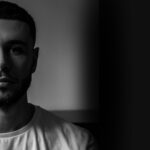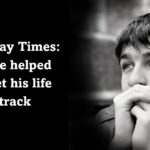LGBTQI+ Youth Homelessness
Aideen Quilty is currently the Associate Dean of Social Sciences in UCD. She lectures in Gender and Social Justice and is the Director of the Gender Studies Community University Outreach programme. She has been committed to advancing an institutional agenda of Equity, Diversity and Inclusion (EDI) and LGBTQI+ rights throughout her career.

Dr. Aideen Quilty / Courtesy of author
As we celebrate PRIDE in Ireland and acknowledge all the positive developments that have happened for LGBTQI+ people, we also have an opportunity to think about the challenges that continue to impact the community. One issue is youth LGBTQI+ homelessness. LGBTQI+ refers to lesbian, gay, bisexual, transgender, queer and intersex, the + includes those who prefer not to use these letters, for example non-binary or gender queer people.
We know that young LGBTQI+ people face higher risks of homelessness than the general youth population. This knowledge is based on data and findings from many international studies and estimates vary from 8%-37%. This is an extremely concerning statistic. To address this problem we need to listen to young LGBTQI+ people and learn from their first-hand experiences.
During 2019-20, I was involved in the first study of LGBTQI+ youth homelessness in Ireland. Supported by Focus Ireland and BeLonG To, we interviewed twenty-two amazing young LGBTQI+ young people in Dublin and other cities and towns in Ireland. They shared their experiences of becoming, being and leaving homelessness. I would like to share some of the things we learned from their powerful stories.

Becoming Homeless
Over half the young people interviewed described conflict with their parents or caregivers about their LGBTQI+ identity. Many of the young people spoke about coming out to their families and how this triggered their homelessness. Here is how one young person described it:
The reason she kicked me out at that time, was because I had come home wearing makeup, after going out on a date with a guy and she went crazy that night. Went upstairs. When I came back down the next day, she basically just told me to leave. – Max
The Dublin rental market was also a real challenge. Trans and queer people found it particularly difficult and encountered homophobia and transphobia when they were viewing places:
Yeah, renting was a lot harder as a trans person. Or as a visibly queer person. So, like one instance, there was this place that was perfect for me… I could afford the rent and the people seemed nice, and it was nice place… But they say that, oh what was it? That I wouldn’t fit their culture. That was how they worded it. – Jo
Being Homeless
Many of these young people were quite shocked to find themselves homeless and did not know where to go or what to do. Most were reluctant to use homeless services. They were concerned about homophobic and/or transphobic service cultures. They were also concerned about sharing rooms and facilities with people they didn’t know. Instead, many were sofa surfing, sleeping in cars and vans or night walking and sleeping in safe spaces during the day. They spoke about how stressful and exhausting this time was for them and how they felt like they were failures.
“But there is a very grim feeling about the first experience I had of staying, not even on a friend’s couch… And it’s just the kind of sense of, “God, this is a disaster. Like I have massively messed up.” -Robyn
They also described what it is like to live in a ‘double closet’, having to deal with two challenges. They were terrified to come out as LGBTQI+ within homeless services and they didn’t want to come out as homeless within LGBTQI+ safe community spaces in case it influenced how their friends looked at them. This tells us that stigma and shame were hugely present in these young people’s lives.
“It was horrible. It was terrible. I felt like nothing. Yeah, I was drinking a lot. I was just in the middle of this gigantic spiral of shame. Shame was my primary emotion at the time.” – Paul
Leaving Homelessness
These young people were proud of their LGBTQI+ identities, and they showed amazing levels of resilience and strength. They talked about how important their queer families and dedicated LGBTQI+ services and support groups were to help them to cope and access homeless supports to exit homelessness.
“Obviously, we’ve all been ostracized and stuff for our identities, but we also form community around those identities, and support networks, and a lot of people without that identity don’t have access to those supports. – Alex
These young people shared their stories so they could influence the future for other young LGBTQI+ people. As we celebrate PRIDE, we have an opportunity to highlight what needs to be put in place. For example:
- Supports for families who struggle with their children’s emerging LGBTQI+ identities to reduce the number of those experiencing homelessness.
- Homeless services with frontline support workers who have been properly trained to understand LGBTQI+ lives and where young people can access without hiding or feeling afraid.
- Dedicated LGBTQI+ emergency, medium and long-term accommodations solutions including university accommodation.
At the end of the day all these young people wanted was a place to belong, a home in which they could simply be. As this young person describes it, that doesn’t sound like too big an ask.
“I just think it will be a home for people that just don’t have it, and not a home where you have to go and pretend that you’re straight and you’re not trans, where you have to hide your body or your voice or your partners, you know, whatever.” – Taylor
Note: Names have been changed to protect people’s identities.

